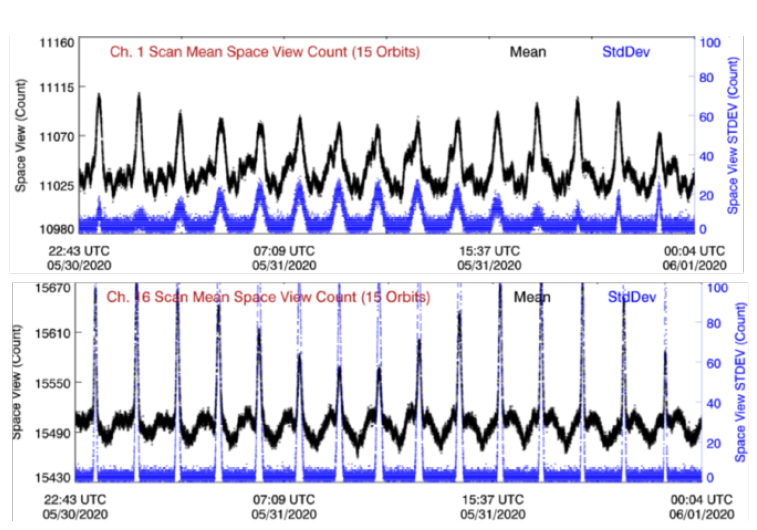
ESSIC/CISESS Scientist Hu “Tiger” Yang has a new article on the Advanced Technology Microwave Sounder (ATMS) in press at IEEE Transactions on Geoscience and Remote Sensing. The Advanced Technology Microwave Sounder (ATMS) is a passive microwave radiometer for the current generation of polar-orbiting meteorological satellites operated by NOAA. The first two ATMS instruments are onboard the Suomi National Polar-orbiting Partnership (S-NPP) and NOAA-20 satellites. The article explains several critical changes in the ATMS operational calibration algorithm since March 2017. Details of the radiance-based ATMS on-orbit calibration are documented and results of pre-launch calibration error budget analysis and post-launch calibration accuracy evaluation are also presented.
One of the calibration issues that arose after launch were lunar intrusions (LI) several times a year that affected several consecutive orbits during each event. An LI happens when the Moon appears in the Field of View of the space view antenna beam. The magnitude of LI depends on channel frequency, beam width, as well as the Moon phase (see figure). The calibration algorithm identifies and flags LI events of a certain magnitude and corrects it using space views. If there are not enough space views, the issue is corrected in cold calibration radiance.
Yang, IEEE member, received his Ph.D degree from the Institute of Remote Sensing Application, China Academy of Science, Beijing, in 2003. He has over twenty years experiences on active and passive microwave remote sensing, microwave radiometer ground and on-orbit calibration, satellite geolocation, and ground calibration processing system development. Since 2012, he joined the Cooperative Institute for Satellite Earth System Studies(CISESS), University of Maryland. He is now a research scientist working on S-NPP and JPSS ATMS calibration/validation. He has published over 40 peer reviewed journals on microwave remote sensing related studies.
To access the paper, click here: “ATMS Radiance Data Products Calibration and Evaluation”.






